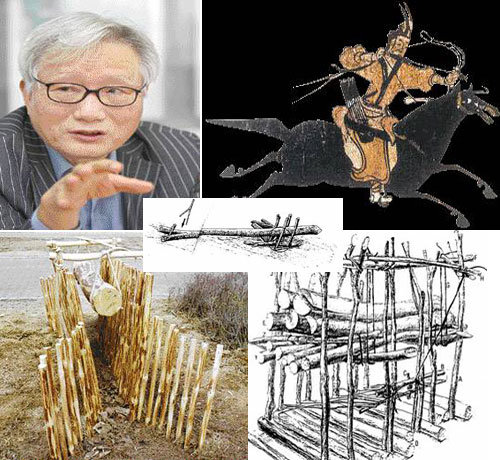Most Sophisticated Early Hunting Techniques in East Asia
Most Sophisticated Early Hunting Techniques in East Asia
Posted September. 12, 2007 07:09,

For modern human beings, hunting is merely a hobby and an old tradition that uses traps, pitfalls, and snares, which is now long forgotten. However, since the prehistoric period, hunting has been a livelihood and part of our culture that played a critical role during the era of agriculture.
Kim Gwang-eon, the director of folklore heritage department of the Cultural Heritage Committee and an honorary professor of Inha University, said on Tuesday, Hunting is the prototype in which the underpinning culture of Koreans can be found. He recently wrote Hunting in Korea, Japan and East Siberia (Minsok-won), a comprehensive book that encompasses East Asias hunting culture for the first time in Korea.
The only achievement I made was to write a chronology of Korean hunting cultural history and to add it to the worlds hunting cultural history. In research in cultural history, it is important to analyze where Korean culture stands by comparing other East Asian cultures. But I could not even find a study that analyzed our own hunting culture, not to mention comparisons, said Kim.
Professor Kim pointed out that the books published after a North Korean scholars 3-4 page Hunting tools used in Mt. Myohyang guide in the 1950s were only hunting guides that sorted out hunting grounds and places where game was located. He said that he was so embarrassed to read a story written by a Japanese scholar who wrote, Japans hunting culture came from Korea but it is an obstacle that there is a lack of data from Korea.
Preparing for his book, he read history books written by individuals like Yongjaechongwha, Dongsagangmok as well as official history records like the chronology of Joseon Dynasty, Goryeosa (history of Goryeo), and Samguksagi. After reading them all, like he said, there were no more books to search for. He also did a field study by visiting older people in every corner of this country to hear stories about old hunting methods.
Kim said, I expected that the hunting culture of Korea, Japan and East Siberia must be connected, since Koreans originally came from Siberia and Mongolia. I substantiated this after analyzing hunting culture, hunting methods, and rituals in various aspects.
He also said that during his research, he realized that there was a limitation in the parallel of archeology and history. He pointed out that archeologists are only interested in relics excavated from the ground, and historians in reading materials. A good example he took was a pitfall for hunting during the prehistoric period.
For 20 years, Japanese excavated tens of thousands of pitfalls. By contrast, Koreans only found 200 after 2000. It was not because there are few remaining, but because archeologists who were uninterested in hunting history did not care about them.
He took trap hunting as a classic example of a hunting method that clearly shows the similarities and differences of East Asian hunting culture. Koreas Yangteul is a device where logs are put on top of the fences to trap animals attracted by a decoy. Oeyangteul is similar but the only difference is that just one end of the logs was put on the fences. Japans Akibira and East Siberias Douii are similar to Oeyangteul
Douii is less functional since only one end of the logs is raised and Japans Akibira is more complicated to make than Yangteul. We can safely assume that Koreas hunting method must be the most sophisticated one.
Professor Kim has kept his research on putting the cultural history of farming appliances and traditional plays into the context of East Asia. He will begin studying plows and millstones next.
Studying our culture while disregarding the spread of culture can only go so far, said Kim.
zeitung@donga.com







